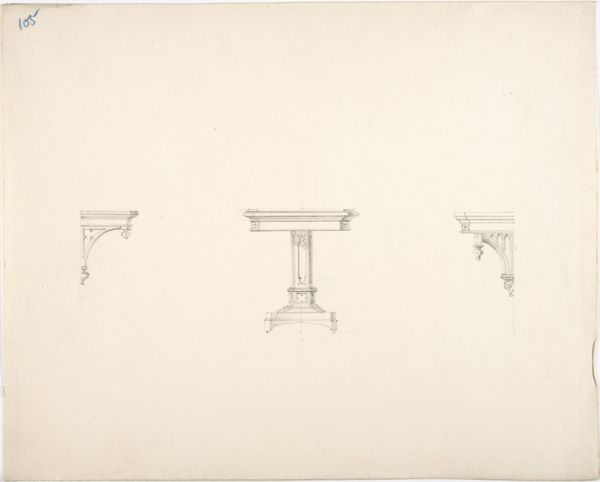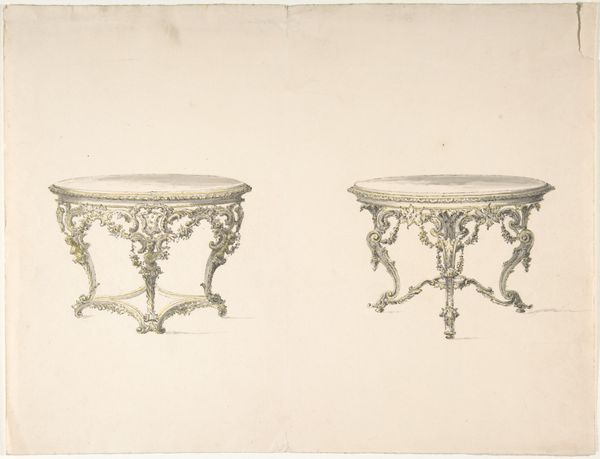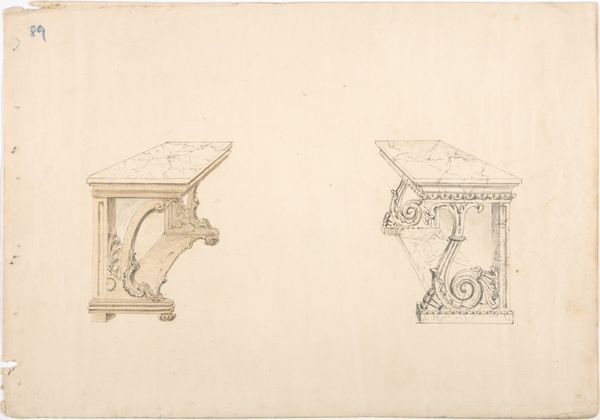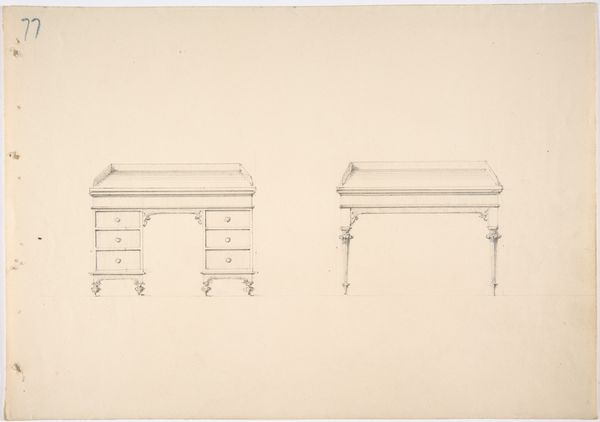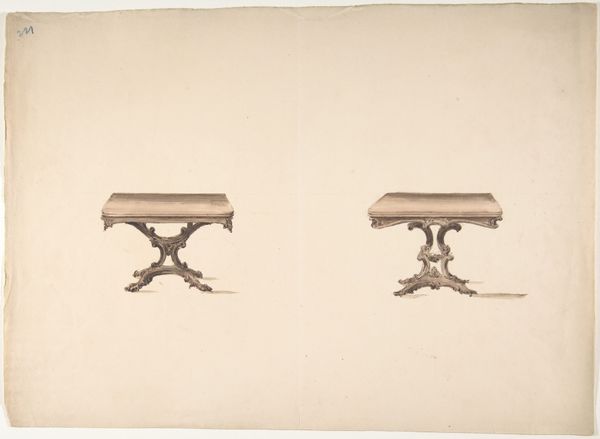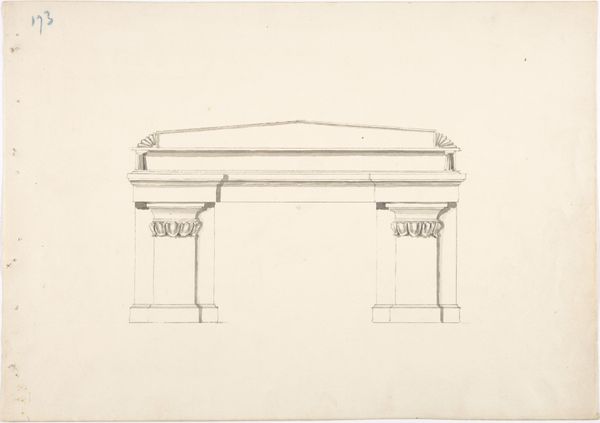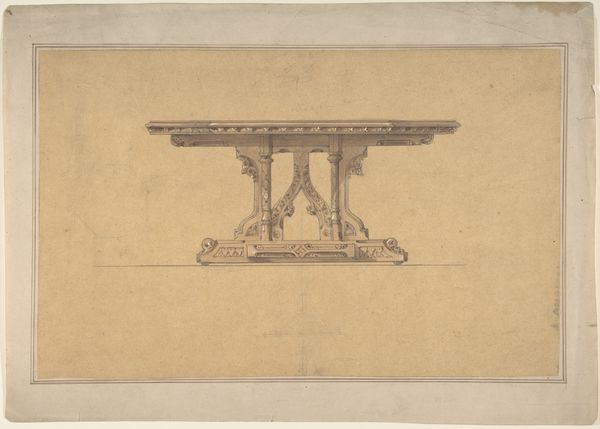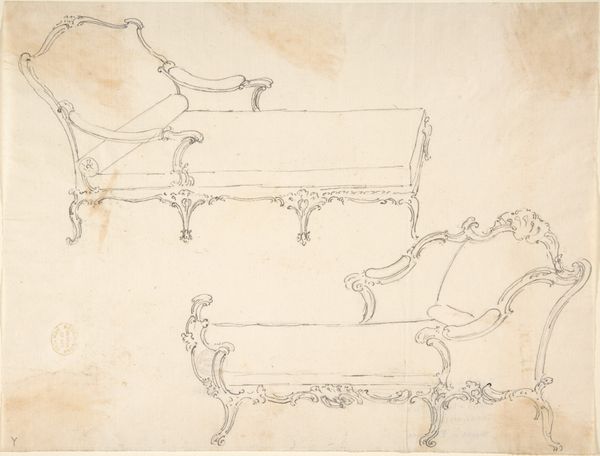
Design for Two Marble Topped Tables with Carved Legs 1800 - 1850
0:00
0:00
drawing, print, paper, watercolor, pencil
#
drawing
#
neoclacissism
# print
#
paper
#
watercolor
#
pencil
#
decorative-art
Dimensions: sheet: 10 3/4 x 14 15/16 in. (27.3 x 38 cm)
Copyright: Public Domain
Curator: Welcome. We are looking at "Design for Two Marble Topped Tables with Carved Legs," created sometime between 1800 and 1850 by an anonymous artist. It’s currently held at the Metropolitan Museum of Art. The piece incorporates drawing and print techniques, using pencil, watercolor, and paper. Editor: My first thought? It's like seeing the ghosts of furniture! They're there, but faded, almost like memories of grand rooms and elaborate feasts. What’s interesting to you about this, from a historical context? Curator: Well, situate yourself within the period; this design embodies the Neoclassical style—a deliberate return to the aesthetics of ancient Greece and Rome, heavily influencing decorative arts of the time. We should note the class implications: design elements of the Neoclassical period served to showcase a new refined opulence in contrast with revolutionary social changes. Editor: Ooh, interesting! A silent, opulent resistance! It makes me think about who owned things like these tables and who definitely didn't. These are probably too fancy to actually put anything ON. Just bejeweled tchotchkes. Curator: Precisely. These designs reflect societal structures where material objects were deeply entangled with social status and power dynamics, so in many ways it is the opposite of useless. Aspirational display was extremely important to create power. How do you perceive that reflected through form, for instance? Editor: Okay, but the symmetry! It's trying so hard to be balanced. It's like it wants to present an idea of harmony, of order... but the reality? Chaos! Just picture people arguing and dripping candle wax on that pristine marble. Curator: That interplay between aspiration and reality is definitely present here. Neoclassical design often masked complex political and social tensions under a veneer of order and proportion, mirroring both control and constraint. Considering Anonymous created it as a potential table, it highlights a period where form met cultural demand and societal projection. Editor: You are spot on, of course! All I see are fancy desserts, now. Well, thinking about the layers we've unpicked – the social, historical, personal perspectives… I find a deeper, more colorful set of contexts than I did at first. It really feels special now. Curator: Absolutely. Considering it as both an artifact and an insight offers the best perspective.
Comments
No comments
Be the first to comment and join the conversation on the ultimate creative platform.
